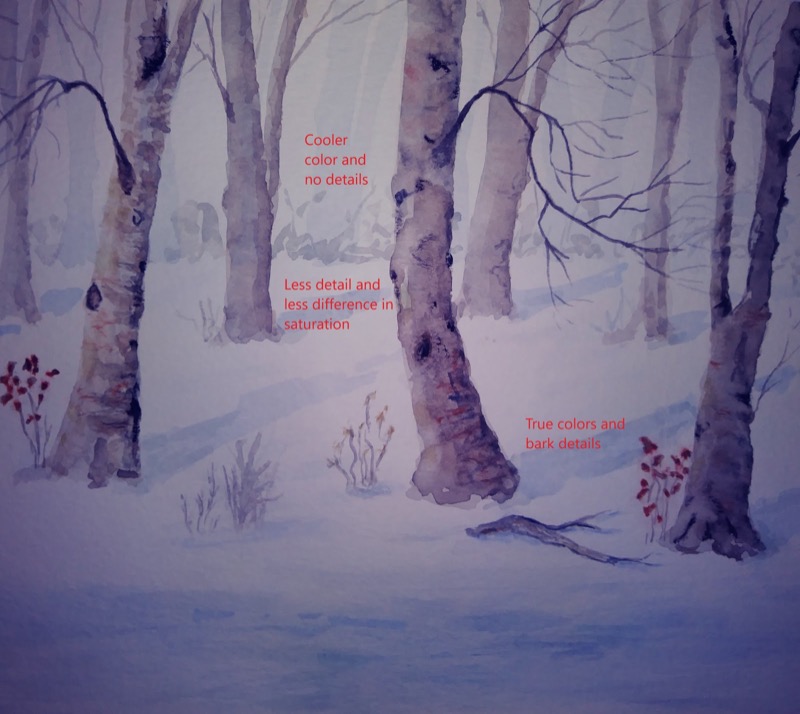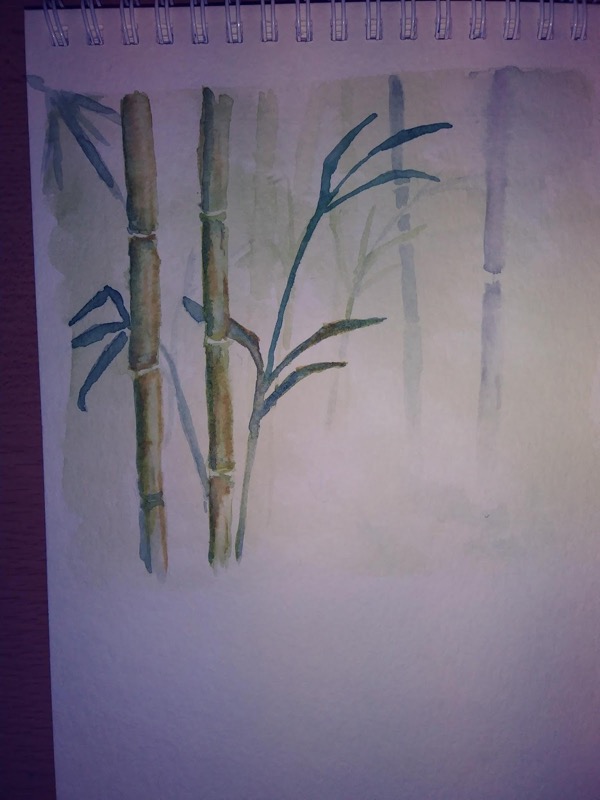When I was first struggling with watercolors, I felt that my paintings were coming out flat and lifeless. There were so many things I was doing wrong! Some of them were difficulties with technique, but one in particular was really just a failure of understanding the differences in how near objects look different from those in the distance. I had no concept of aerial perspective. Maybe it’s a basic topic covered in art classes, but I have had no art classes since the mid 1970’s in high school, where it was never mentioned. So let’s start with a basic definition.
What is Aerial Perspective?
Aerial perspective (also known as atmospheric perspective) is a set of techniques that allow artists to capture the illusion of depth and distance. To achieve aerial perspective, we are portraying how atmosphere changes color and saturation and how our eyes discern distant detail in a different way from details we see at close range.
I was fortunate to learn about aerial perspective in the very first watercolor class I took at our public school system’s adult education department.
What are the Techniques For Achieving Good Aerial Perspective?
- Adjust the saturation
- Cool down the color
- Reduce the level of detail in objects that are in the middle distance of your composition. If you add ANY detail, there should be less difference in saturation of the detail vs. the object itself.
- In the far distance, just put in light washes of a single color for your shapes, whether they are trees, mountains, buildings or people.
Here is an original watercolor I did from no particular reference, just trees in my imagination:

Is it necessary to use all these techniques in the same painting? This painting is not one I was completely happy with, but I didn’t cool down the colors in the distance in this one, because I wanted the overall color palette to be autumn colors. I wanted to carry that burnt sienna down throughout.
Here is a beautiful example from watercolor artist Grzegorz Wrobel.

Just a little bit of aerial perspective gave my response to the recent Bamboo challenge an air of serenity:

Observation Skills are Critical
For me, it starts by closer observation of the world outside. On a walk or a drive I notice the difference between near and far objects and think about how I would paint them.
Don’t paint just from photographs or your imagination. Photographs with a wide depth of field will capture too much detail in the distance and you will be tempted to paint that way.


